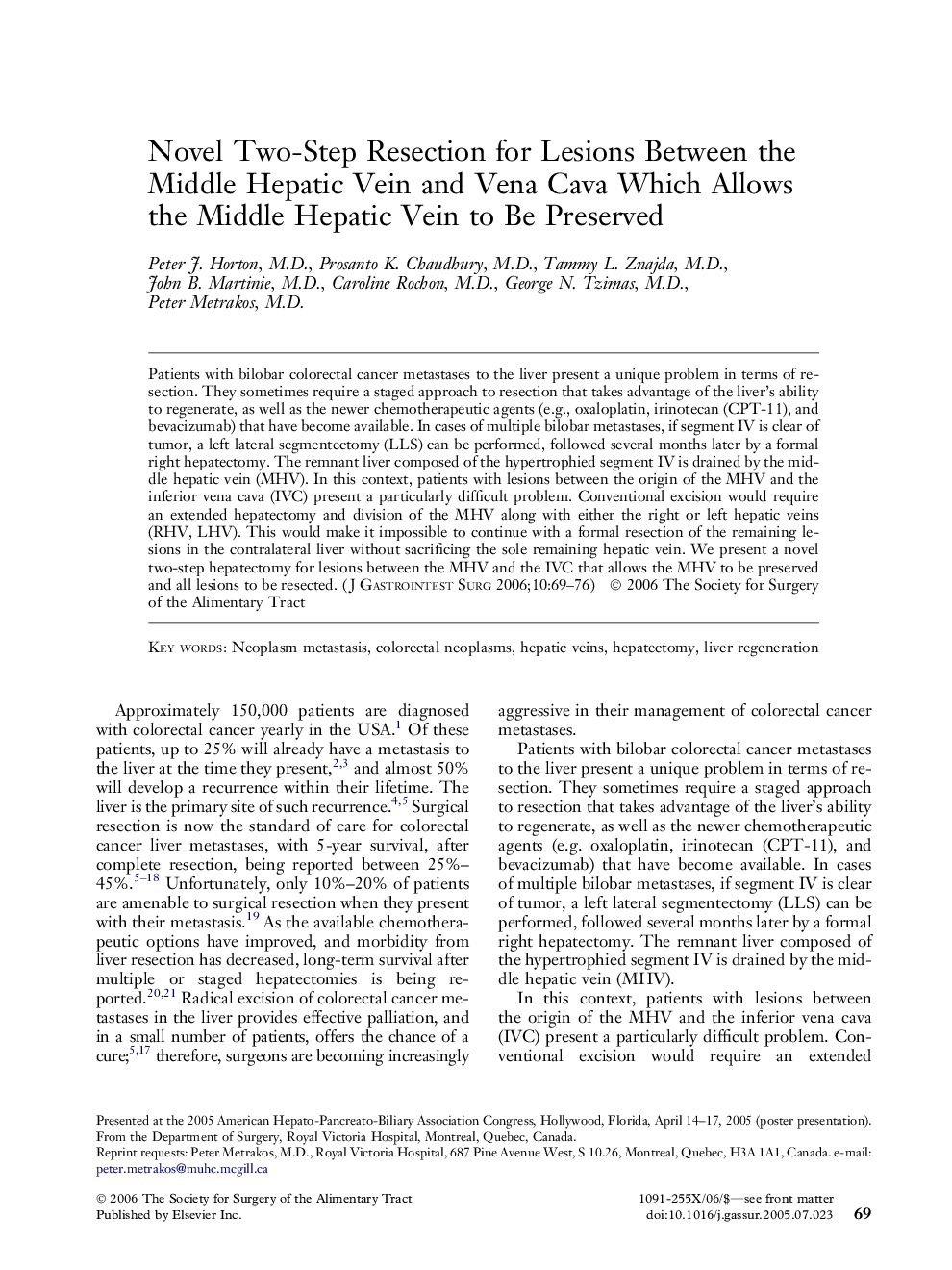| Article ID | Journal | Published Year | Pages | File Type |
|---|---|---|---|---|
| 4297259 | Journal of Gastrointestinal Surgery | 2006 | 8 Pages |
Abstract
Patients with bilobar colorectal cancer metastases to the liver present a unique problem in terms of resection. They sometimes require a staged approach to resection that takes advantage of the liver's ability to regenerate, as well as the newer chemotherapeutic agents (e.g., oxaloplatin, irinotecan (CPT-11), and bevacizumab) that have become available. In cases of multiple bilobar metastases, if segment IV is clear of tumor, a left lateral segmentectomy (LLS) can be performed, followed several months later by a formal right hepatectomy. The remnant liver composed of the hypertrophied segment IV is drained by the middle hepatic vein (MHV). In this context, patients with lesions between the origin of the MHV and the inferior vena cava (IVC) present a particularly difficult problem. Conventional excision would require an extended hepatectomy and division of the MHV along with either the right or left hepatic veins (RHV, LHV). This would make it impossible to continue with a formal resection of the remaining lesions in the contralateral liver without sacrificing the sole remaining hepatic vein. We present a novel two-step hepatectomy for lesions between the MHV and the IVC that allows the MHV to be preserved and all lesions to be resected.
Related Topics
Health Sciences
Medicine and Dentistry
Surgery
Authors
Peter J. M.D., Prosanto K. M.D., Tammy L. M.D., John B. M.D., Caroline M.D., George N. M.D., Peter M.D.,
